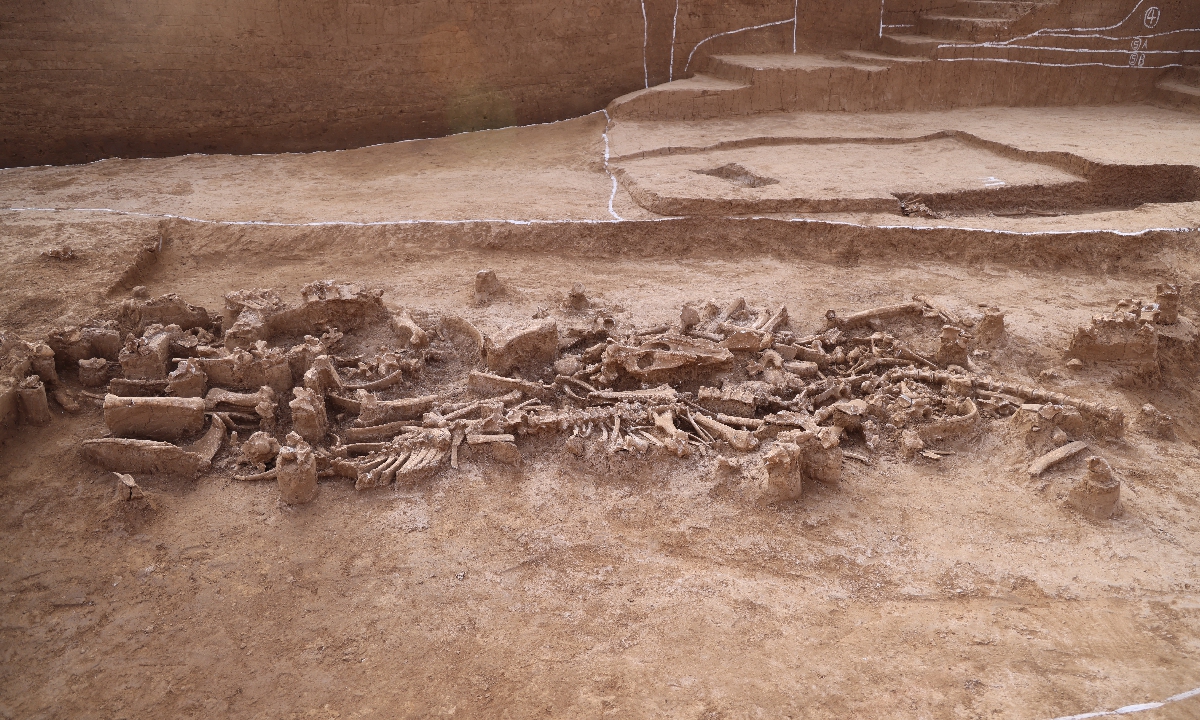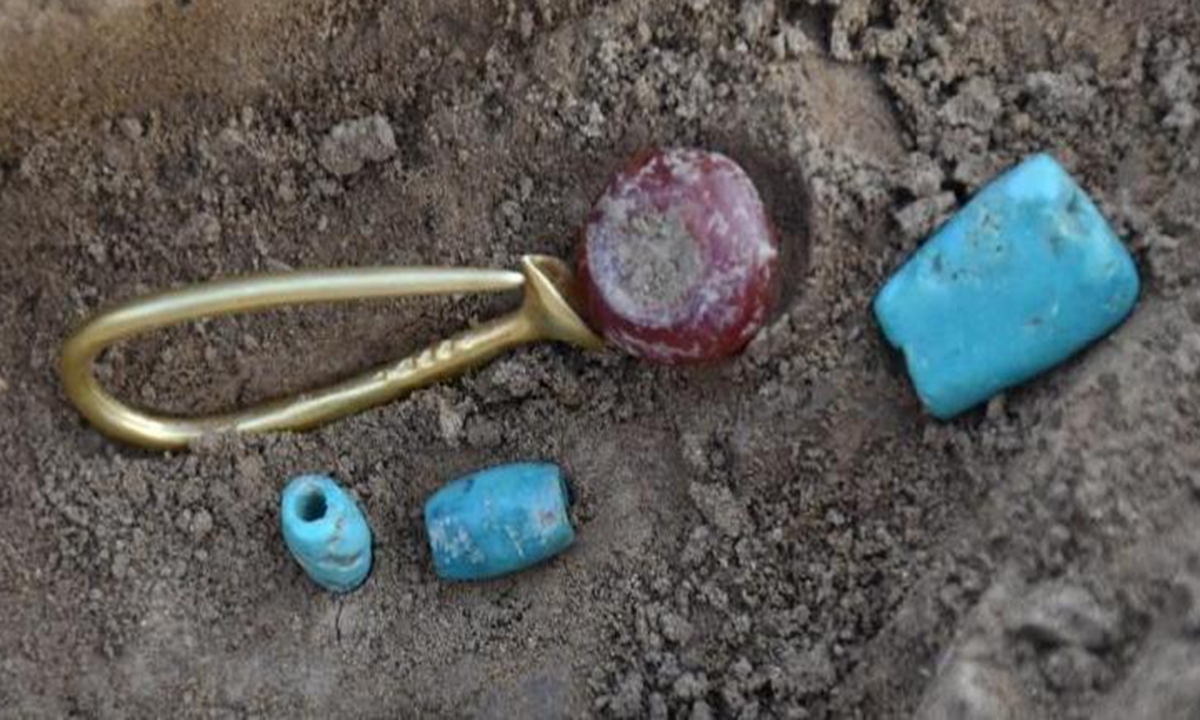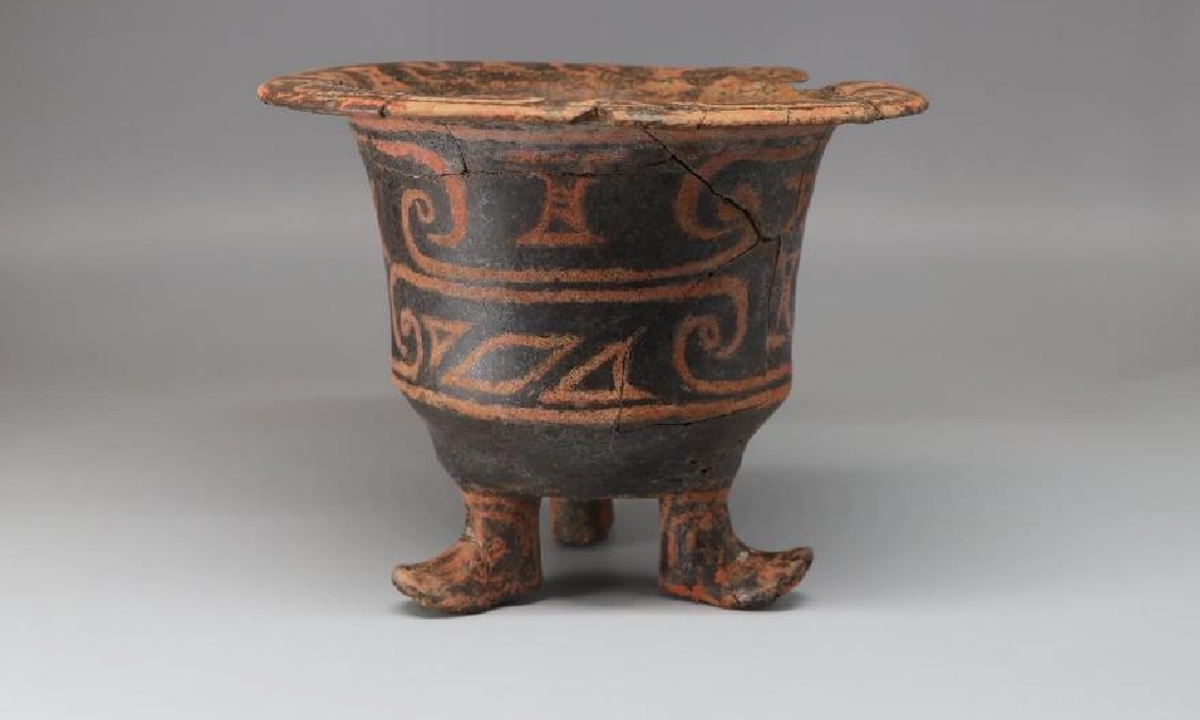
Huanbei Shang City site in Central China's Henan Province Photo: Courtesy of National Cultural Heritage Administration
Four of the latest archaeological discoveries dating back to the Shang Dynasty (c.1600BC-1046BC) were revealed at a seminar held at the National Cultural Heritage Administration on Tuesday. Chinese archaeologists stated that the four sites are significant achievements In the study of archaeology and the civilization of the Shang Dynasty.The Huanbei Shang City site, located in Anyang, Central China's Henan Province, is part of the famous Yin Ruins, which was once a capital city during the middle of the Shang Dynasty. The current excavation has confirmed that the "Guo city" in the western part of the site was made from ditches, rather than rammed earth walls as previously thought. Researchers have found the remains of roads from different periods crossing the city ditch, providing important clues for exploring the internal and external transportation network of the entire ancient site. He Yuling, a research fellow at the Chinese Academy of Social Sciences Institute of Archaeology, told the Global Times on Tuesday that this discovery might change the current understanding of city layouts in China, as it shows that solid city walls were not the only way to protect a city.
Additionally, a large sacrificial trench at the Yin Ruins, located on a layer above the city ditch, demonstrates a change in the function of the ditches, providing a good example of the evolution of settlements during the middle to late Shang Dynasty.

A bronze ware discovered in the Zhangjiawa site in North China's Hebei Province Photo: Courtesy of National Cultural Heritage Administration
Another significant site is located in the southern part of North China's Hebei Province. This site was once an important military location during the Shang Dynasty.The Zhangjiawa site in Hebei Province's Zhangjiawa village, Laishui county, was a medium-sized settlement during the Shang and Zhou dynasties. Over 300 artifacts were unearthed from high-level tombs dating back to the early Western Zhou Dynasty (1046BC-771BC), indicating the coexistence of local people, newly relocated Zhou people, and remaining people of the late Shang Dynasty.

A high-level tomb discovered in the Zhoujiazhuang site in North China's Hebei Province Photo: Courtesy of National Cultural Heritage Administration
The Zhoujiazhuang site is a late Shang Dynasty cemetery where 17 tombs were discovered, including two tombs that are typical examples of royal tombs from the Xia (c.2070BC-c.1600BC) and Shang dynasties. This is the first time that a high-level Shang Dynasty tomb of a noble, complete with tomb passages, has been found in the province."These important discoveries have improved our understanding of the archaeological cultural system during the transition from the Shang Dynasty to the Zhou Dynasty in Hebei Province," said Wei Shuguang, a research fellow with the Hebei Provincial Institute of Cultural Relics and Archaeology, at the seminar.

Zhaigou site in Northwest China's Shaanxi Province Photo: Courtesy of National Cultural Heritage Administration

A trurquoise bronze bird ornament discovered in the Zhaigou site in Northwest China's Shaanxi Province Photo: Courtesy of National Cultural Heritage Administration
The Zhaigou site, located in Qingjian county, Yulin city in Northwest China's Shaanxi Province, is a late Shang Dynasty settlement situated on 11 hills dominated by large rammed earth buildings. Multiple functional areas, including large tombs, small cemeteries, and bronze casting shops, have been discovered. Among them, seven of the tombs are the largest and most numerous high-level noble tombs found in northern Shaanxi Province. These were state-level tombs, which is of great significance for studying the political structure of the Shang Dynasty and the interaction between the core area of Shang culture and the northern marginal zone.
Xingong site in Beijing Photo: Courtesy of National Cultural Heritage Administration
The fourth site, the Xingong site in Beijing's Fengtai district, is one of the earliest Bronze Age settlements discovered in the capital. It is also the first double-ring ditch settlement from the Datuotou culture, a culture from the Xia and Shang periods, ever discovered. It's the first Xia-Shang-Zhou ruins discovered in urban Beijing.
A flared gold earring along with turquoise and red agate beads from a high-level tomb discovered in Xingong site in Beijing's Fengtai district Photo: Courtesy of National Cultural Heritage Administration
During the excavation, colored pottery, jade pendants, a flared gold earrings, and turquoise necklaces with both Central Plains and Northern cultural elements back to 3,800 years ago were excavated from the Datuotou culture tombs, vividly reflecting the history of cultural exchanges and human integration between the Yanshan Mountains in Beijing and the northern grassland areas during the Bronze Age, according to Han Hongye, a researcher from the Beijing Institute of Archaeology.
A painted pottery with boot-shaped feet discovered in Xingong site in Beijing Photo: Courtesy of National Cultural Heritage Administration
Chinese archaeologists noted that the four archaeological sites provided valuable insights into city construction during the Shang Dynasty. The findings shed light on the dynasty's social system, funeral etiquette and handicraft production. They further emphasized that under the framework of a major project, the study of Xia and Shang civilization will be further promoted through multidisciplinary and interdisciplinary cooperation for a better interpretation of the historical development of Chinese civilization.



